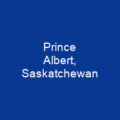Edmonton: A City of Champions
Edmonton is a city that has seen its share of ups and downs, but it’s always risen to the challenge. Nestled on the North Saskatchewan River, this capital city of Alberta has a rich history dating back to the First Nations peoples who first inhabited the area in 1754.
Imagine stepping into Edmonton’s past, where Fort Edmonton stood as a bustling hub for trade and commerce. Established in 1795, it was later known as the main centre for trade in the region. But it wasn’t until the Canadian acquisition of Rupert’s Land in 1870 that Edmonton began to grow beyond its initial sparse population.
Fast forward to today, and Edmonton has transformed into a vibrant metropolis with over one million residents. It’s known as the “Gateway to the North” and hosts festivals year-round, making it a true city of champions in every sense of the word.
The Gateway to the North
Edmonton’s nickname is not just a title; it’s a testament to its strategic location. As the gateway to northern Alberta, Edmonton serves as a crucial entry point for exploration and development in the region. The city’s diverse landscape, from prairies to boreal forests, offers endless opportunities for adventure and discovery.
But what makes Edmonton truly unique is its rich cultural tapestry. With immigrants from over 200 countries calling it home, the city is a melting pot of traditions, languages, and customs. This diversity is reflected in its vibrant festivals, museums, and community events that celebrate the many cultures that make up this dynamic city.
From Tornadoes to Triumphs
In 1987, Edmonton faced one of its most challenging moments when an F4 tornado struck on July 31. Known as ‘Black Friday,’ it left a lasting impact on the city and earned Edmonton the moniker “City of Champions.” The resilience shown by the community in the face of such adversity is a testament to the strength and unity that defines Edmonton.
But Edmonton’s story isn’t just about overcoming natural disasters. It’s also about embracing growth, innovation, and progress. From the opening of its first licensed airfield in 1929 to becoming Canada’s sixth-largest metropolitan area by 2021, Edmonton has consistently shown a forward-thinking spirit.
Climate and Geography
Edmonton’s climate is as diverse as its people. With cold winters and warm summers, the city experiences all four seasons in full force. The North Saskatchewan River runs through the heart of the city, providing not only a natural boundary but also a source of beauty and recreation.
The terrain around Edmonton is generally flat to gently rolling, with ravines and deep river valleys adding to its scenic charm. The Canadian Rockies are just 220km away, offering breathtaking views and outdoor adventures for those who seek them.
Urban Development
Edmonton’s urban landscape is a mix of historical landmarks and modern developments. Fort Edmonton Park offers a glimpse into the city’s past, while the Edmonton City Centre Airport is being redeveloped into Blatchford, a sustainable community that will eventually house 30,000 people.
The city has annexed significant land from Leduc County and Beaumont in recent years, aiming to expand its reach and provide more services to its growing population. This strategic growth ensures that Edmonton remains a dynamic and forward-thinking metropolis.
Conclusion
Edmonton is not just a city; it’s a living, breathing entity that continues to evolve and thrive. From its rich history to its vibrant present, Edmonton stands as a testament to resilience, diversity, and progress. As the capital of Alberta, it serves as a beacon for innovation and community spirit.
So, whether you’re exploring its historical landmarks or enjoying one of its many festivals, remember that Edmonton is more than just a place—it’s a city of champions, always ready to face new challenges with courage and determination.
You want to know more about Edmonton?
This page is based on the article Edmonton published in Wikipedia (retrieved on February 18, 2025) and was automatically summarized using artificial intelligence.







